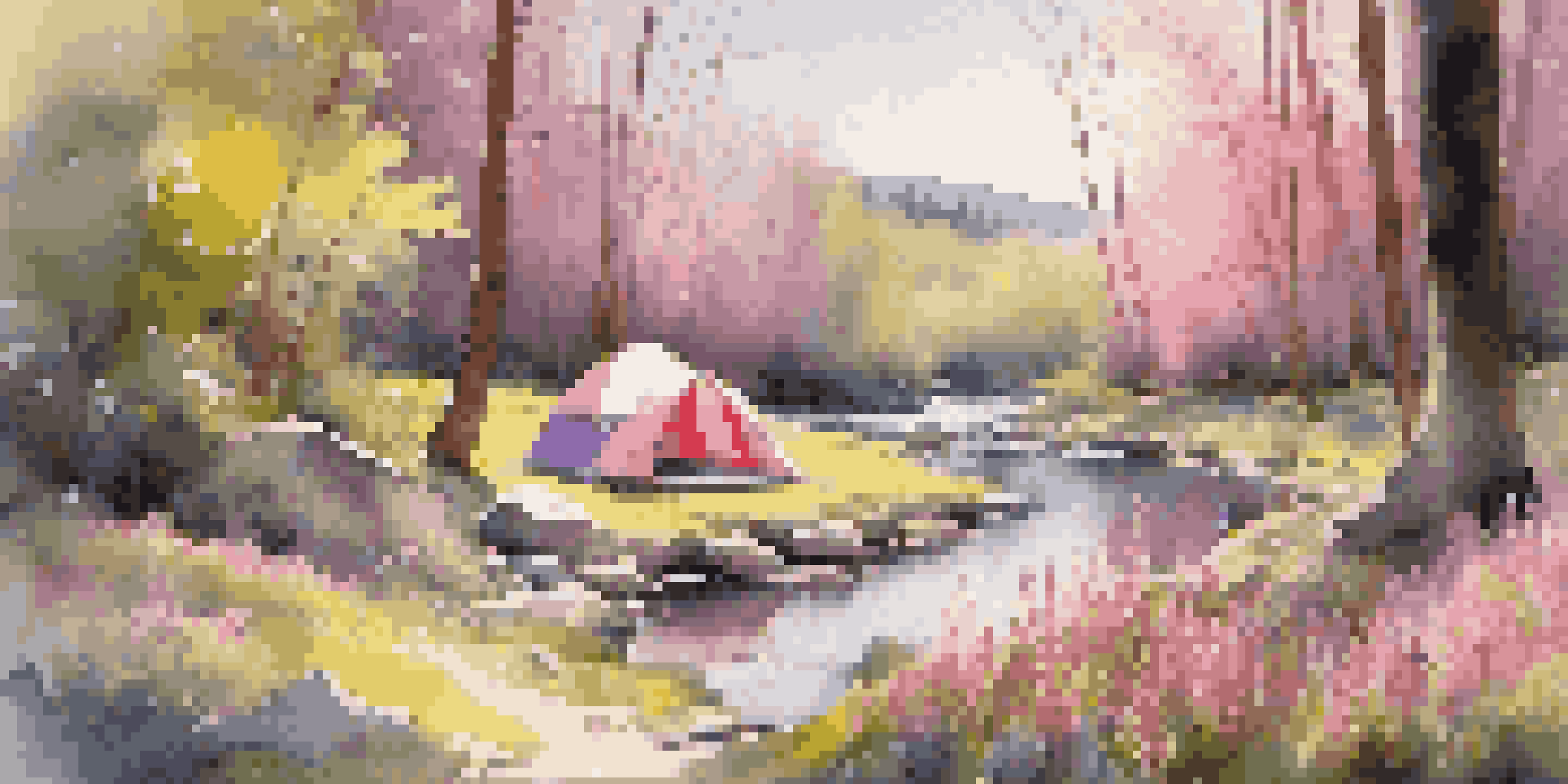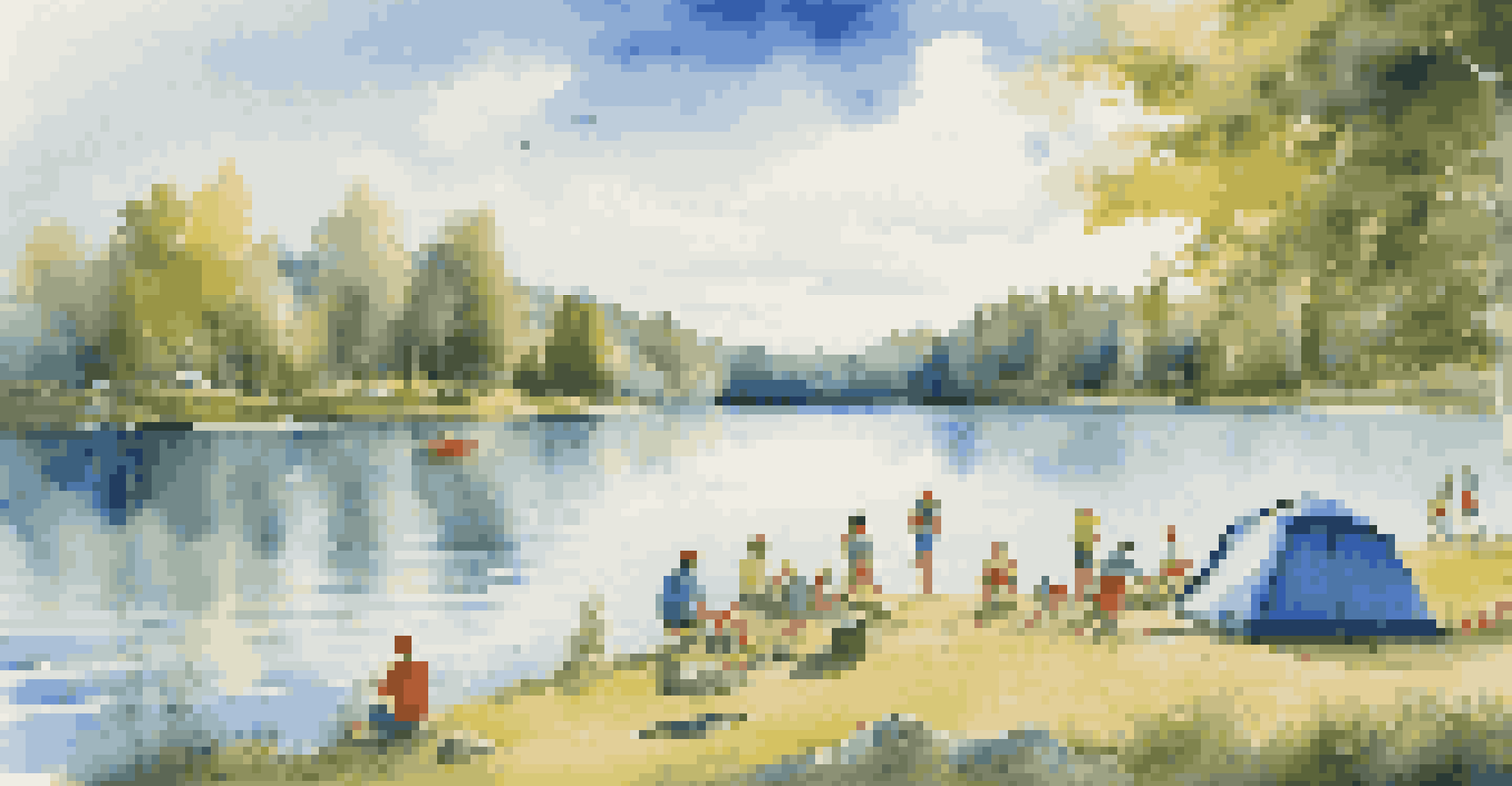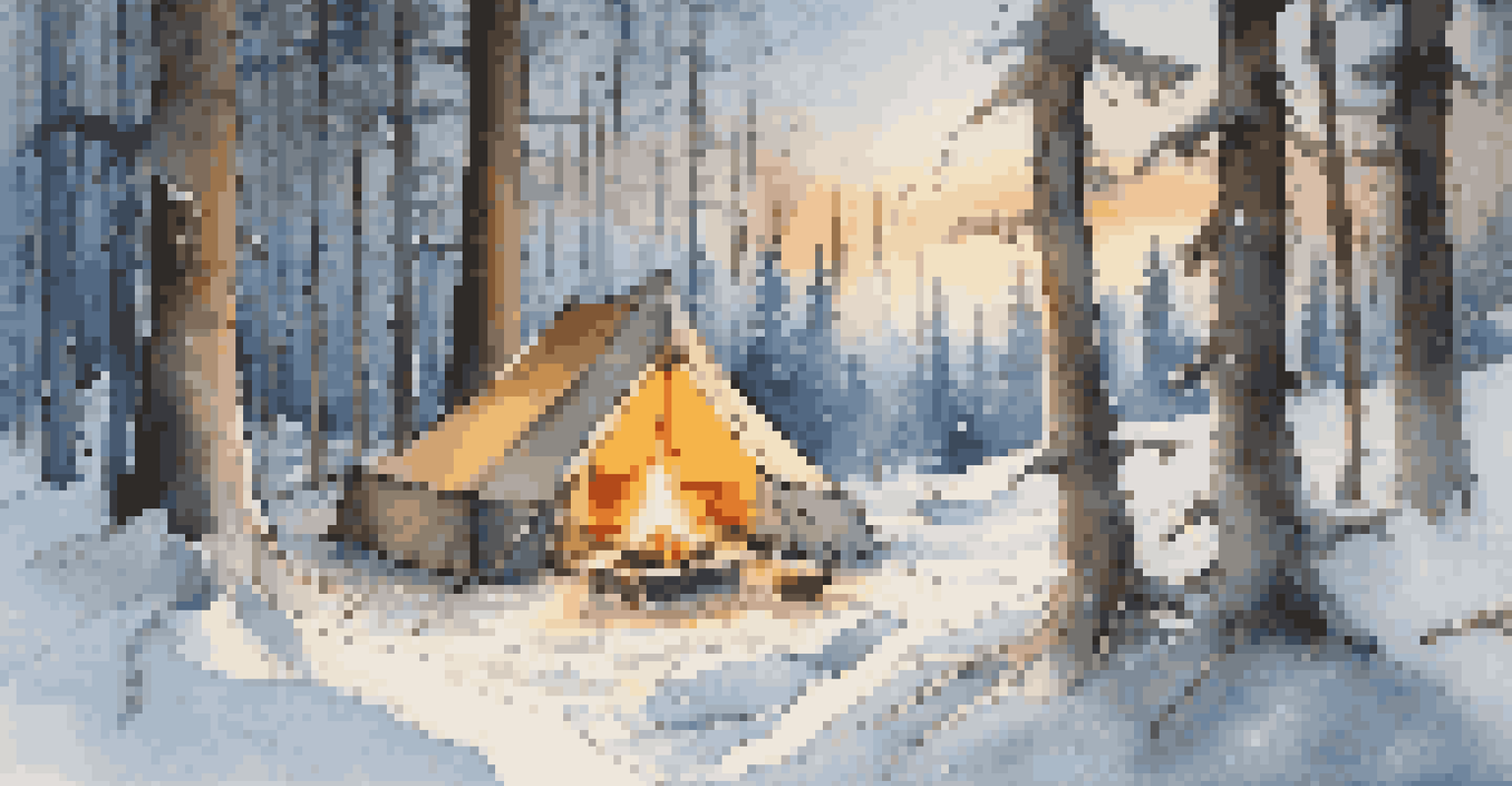Camping in Different Seasons: Tips for Year-Round Adventures

Spring Camping: Embrace the Blooming Beauty
Spring is a magical time for camping, as nature bursts back to life. You'll witness blooming flowers, babbling brooks, and a refreshing change in temperature. The days are getting longer, making it perfect for hiking and exploring the great outdoors.
In every walk with nature one receives far more than he seeks.
However, spring also brings unpredictable weather, so pack layers and be ready for rain. A sturdy tent with good ventilation will keep you dry during those occasional showers. Don't forget to bring your waterproof gear and a warm sleeping bag for chilly nights.
Getting an early start on your camping season can also mean fewer crowds at popular sites. Plus, you might spot some wildlife waking up from their winter slumber, adding an extra thrill to your adventure!
Summer Camping: Make the Most of the Sunshine
Summer is the quintessential camping season, filled with sunshine and outdoor fun. With school out, families often flock to campsites, making it a vibrant time to set up your tent. Enjoy activities like swimming, fishing, and hiking as you soak up the sun.

To beat the heat, plan your hikes for early morning or late afternoon, and remember to stay hydrated. Invest in a good cooler for your food and drinks to keep everything fresh. A portable hammock can also be a great way to relax in the shade.
Seasonal Camping Offers Unique Joys
Each season brings distinct experiences, from vibrant blooms in spring to serene snow-covered landscapes in winter.
Consider camping near water sources for extra fun. Lakes or rivers not only provide a refreshing escape from the heat but also open up opportunities for kayaking, paddleboarding, and fishing adventures.
Autumn Camping: Experience the Colorful Change
Autumn is a feast for the senses, as trees transform into a stunning palette of reds, oranges, and yellows. Camping during this season offers a unique chance to witness nature’s beauty while enjoying cooler temperatures. It's also a great time for activities like apple picking or visiting local pumpkin patches.
The mountains are calling and I must go.
However, as the days grow shorter, you'll want to plan your activities accordingly. Bring a good headlamp or flashlight for those early nights around the campfire. Also, don't forget to pack layers, as temperatures can drop significantly after sunset.
Autumn camping is also an excellent opportunity for stargazing, as the crisp air often means clearer skies. Grab a blanket, snuggle up by the fire, and gaze at the stars—it's a perfect way to end the day.
Winter Camping: Find Your Cozy Adventure
Contrary to popular belief, winter camping can be a thrilling experience for those who love the snow. Picture yourself surrounded by a quiet, snow-covered landscape, where the only sounds are the crunch of your boots and the crackle of a campfire. It's a serene escape that few get to enjoy.
To stay warm, invest in a four-season tent and a high-quality sleeping bag rated for cold temperatures. Layer your clothing, using moisture-wicking materials as a base and insulating layers on top. Hot drinks and hearty meals will also keep you cozy and energized.
Essential Gear Ensures Comfort
Packing the right gear, including suitable tents and sleeping bags, is crucial for an enjoyable camping adventure in any season.
Winter camping offers unique activities, such as snowshoeing and ice fishing. Plus, many national parks are less crowded during the winter months, allowing you to connect with nature in a more intimate way.
Campsite Selection: Finding the Perfect Spot Year-Round
Choosing the right campsite is crucial to your camping experience, regardless of the season. Look for sites that are well-drained and provide natural windbreaks to protect against the elements. Research local regulations and availability, especially during peak seasons.
In spring, consider sites near blooming wildflowers or streams; in summer, seek out shaded areas close to water. Autumn sites with stunning foliage views can enhance your experience, while winter campers should prioritize locations with easy access to snow activities.
Always check weather forecasts and prepare accordingly. Some sites might be closed due to seasonal conditions, so it's wise to have backup options ready to go.
Essential Gear for Year-Round Camping Adventures
Packing the right gear is essential for a successful camping trip in any season. Start with a high-quality tent that suits the weather conditions you'll face. For example, a three-season tent is suitable for spring, summer, and fall, while a four-season tent is best for winter escapades.
Don't forget your sleeping gear! A good sleeping pad will provide insulation from the cold ground, and a sleeping bag rated for the season will keep you comfortable. For summer, consider lightweight options, and for winter, opt for thicker, insulated bags.
Eco-Friendly Practices Matter
Adopting Leave No Trace principles helps protect nature and ensures that beautiful camping environments remain pristine for future generations.
Lastly, pack a versatile cooking system and plenty of food options to keep you energized. Think portable stoves, compact cookware, and easy-to-prepare meals suitable for outdoor cooking, no matter the season!
Safety Tips: Stay Prepared for Any Weather
Safety should always be a top priority while camping, especially when the weather can be unpredictable. Before heading out, familiarize yourself with the area, including potential hazards like wildlife, weather changes, and terrain challenges. Carry a first aid kit and know how to use it.
Always inform someone of your plans, including where you'll be camping and your expected return time. It's also smart to bring a portable phone charger or a satellite communicator, especially in remote areas.

Lastly, be adaptable! Weather can change quickly, and being prepared for sudden rain or temperature drops can make all the difference. Keep an open mind and be ready to adjust your plans to ensure a safe and enjoyable adventure.
Eco-Friendly Camping: Leave No Trace Practices
As camping enthusiasts, we have a responsibility to protect the beautiful environments we explore. Practicing Leave No Trace principles is vital to ensure that nature remains pristine for future generations. This means packing out all trash, minimizing campfire impacts, and respecting wildlife.
Choose established campsites whenever possible to reduce your impact on the land. Stick to designated trails when hiking to prevent soil erosion and protect delicate ecosystems. Being mindful of where you set up camp helps preserve the beauty of our natural spaces.
Finally, consider using eco-friendly products, from biodegradable soaps to reusable utensils. Every small action contributes to a larger impact, helping to keep our wilderness areas intact and enjoyable for everyone.